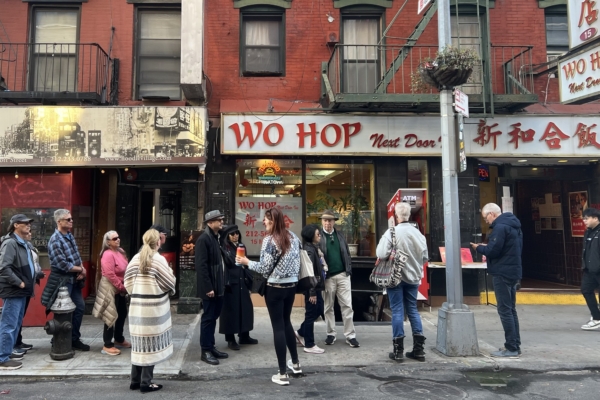A recent survey by the NYC Hospitality Alliance in New York City revealed that over 70% of restaurant owners feel that their summer business this year did not match up to last year’s, due to rising costs and customers tightening their purse strings. However, a different story is unfolding in Chinatown where the restaurant industry is thriving. Businesses like Beautiful China Cha Chaan Teng taking over the old Phoenix Bakery location are not isolated cases. The desire to expand to larger premises and open new branches is prevalent among owners in Chinatown, attributed to the deep-rooted culinary culture that holds an irresistible appeal for diners.
The Executive Director of the Chinatown Business Improvement District, Chen Zuozhou, highlighted in an interview that despite price increases in Chinatown post-pandemic, many restaurants are expanding rapidly due to increased business. Vegetarian restaurant Buddha Bodhi and café Paper Son Cafe, as well as Chinese restaurants like “Szechuan Fish” and “Qing Wei Lanzhou Ramen House,” have all seen swift recovery post-pandemic by opening larger new establishments.
Chen observed several noteworthy trends in Chinatown’s restaurant revival. Firstly, the closure of some old establishments does not necessarily result from economic pressures; rather, the succession model has quietly shifted. For instance, the closure of Phoenix Bakery is not due to high costs but rather the owner’s decision to retire after accumulating wealth, with subsequent generations showing no interest in taking on the strenuous restaurant business. Additionally, some owners have opened new branches under different brand names, departing from their original names, such as Strawberry Home on Mott Street and E Noodle on Catherine Street, making it challenging for outsiders to recognize the same operator behind the establishments.
Furthermore, Chen Zuozhou analyzed that the tourism boom has greatly fueled the revival of the restaurant scene. According to data from the New York City Tourism + Conventions, over 61.8 million visitors were recorded in New York City in 2023, generating $74 billion in economic consumption, with an expected increase to 68 million visitors by 2025.
“This year’s confirmed number is 64 million,” Chen Zuozhou referenced related reports, noting that these tourist groups have shown a curiosity for Chinatown three times higher compared to before. Recently, reporters have observed groups of tourists flocking around Mott Street and its vicinity, listening attentively to tour guides, creating a vibrant scene in Chinatown.
However, Chinatown rarely sees large long-distance tour buses. Since 9/11, parking spaces have not increased, with 400 parking spots on Pell Street being requisitioned by the municipal government, and other parking lots repurposed, indicating that the existing parking spots may not be sufficient to accommodate the needs of large tourist groups.
Chen noted that Manhattan’s developed public transportation undoubtedly remains the primary choice for most tourists. The No. 6 subway line connecting the heart of Manhattan from the Bronx all the way south, passing through different famous landmarks in Manhattan, traversing Chinatown, and finally reaching the iconic Brooklyn Bridge. The MTA released a report earlier this year estimating that the No. 6 subway line carried 140 million passengers throughout 2023, surpassing the combined ridership of the Long Island Rail Road and the Metro-North Railroad.
For travelers coming from afar, Chinatown’s rich history and unique character make it an unmissable destination. Chen stated, “New York City has a population of 8.5 million, with just over 20,000 residents in the heart of Chinatown, presenting a massive opportunity for these 64 million visitors.”
However, he also pointed out that new restaurants entering the market face challenges in sustainability, with frequent changes in store ownership being a common occurrence. “Most restaurants do not survive beyond five years, and many close down within several months, while Chinatown as a whole has lasted over six years,” he expressed, attributing this resilience to the deep-seated culinary culture that holds food in high regard among the Chinese community.

